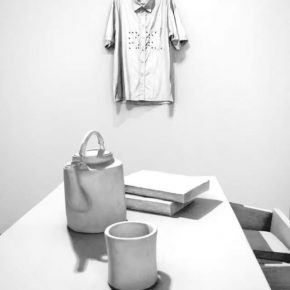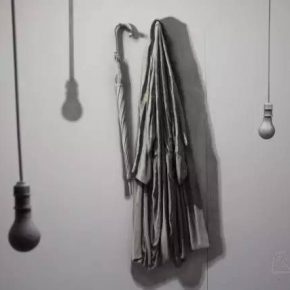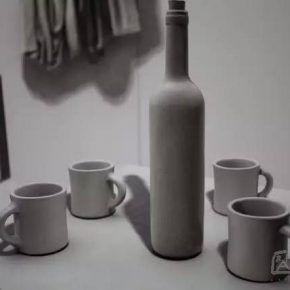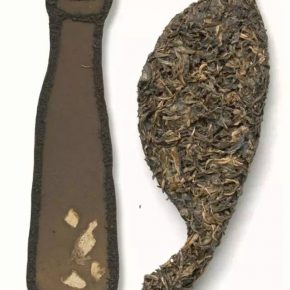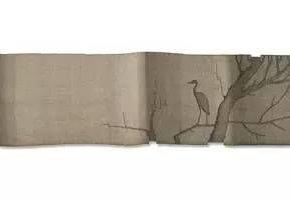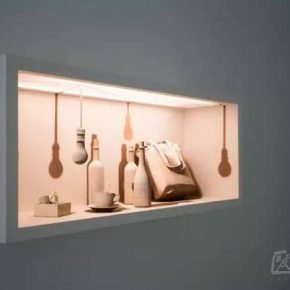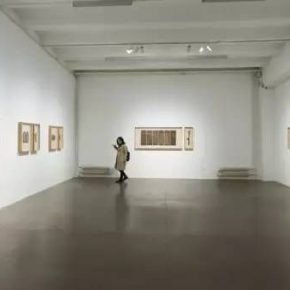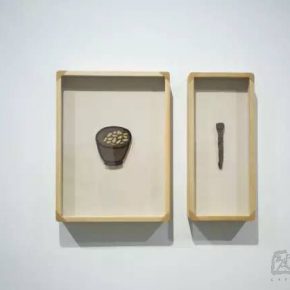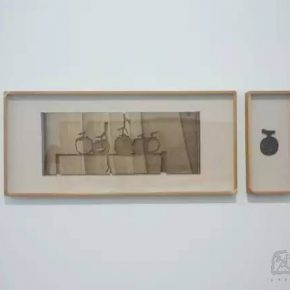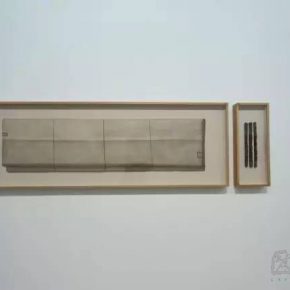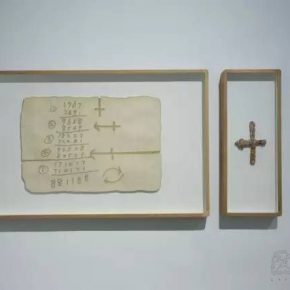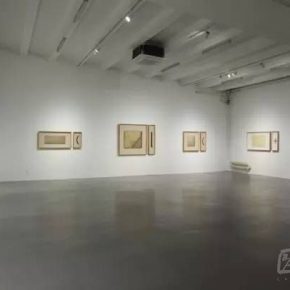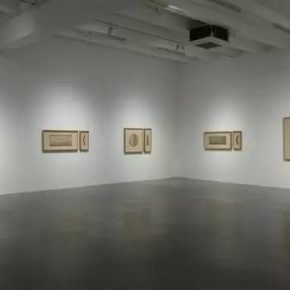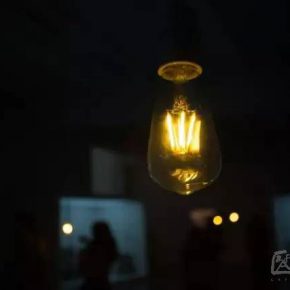
Artist Jiang Ji’an (photo courtesy of Li Yuqi)
How hot the word “image” was, how many post-modern artists spread their own art maps around this proposition, along with the development of technology, ideology and culture, in the opinion of the artist Jiang Ji’an, “the road to image” is bound within the artists’ creation, where does it go? Born into traditional values, Jiang Ji’an insists on starting from Chinese traditional aesthetic thoughts and exploring his own methodology for art creation. On October 16, 2016, “In-between Objects and Shadow: Jiang Ji’an Solo Exhibition” was unveiled at Asia Art Center in Beijing, which is a three-dimensional rendering of his own artistic methods. Before the opening of the exhibition, Jiang Ji’an accepted an exclusive interview with CAFA ART INFO, and shared his deep artistic experience from his thoughts.
Interview time: October 15, 2016
Interview location: Asian Art Center, 798 Art District, Beijing
Interviewee: Artist Jiang Ji’an
Interviewer and editor: Zhang Wenzhi
Translated by Chen Peihua and edited by Sue/CAFA ART INFO
The theme of this exhibition is “In-between Objects and Shadow”, which is difficult to be understood. Would you like to talk about the meaning of this theme?Jiang Ji’an: Curator Bao Dong and I discussed this together and decided the name of the exhibition “In-between Objects and Shadow”, and we applied this meaning to “the change corresponds to an object” in Chuang-tzu’s “The Travel to Know the North”, meaning a response, reaction and interaction. It is also related to the Chinese traditional practice methodologies such as “understanding, through an object to view an object”. “Corresponding to an object” is not to “control an object”, but the subjective that is respectful between the non-confronted, non-conquered people, objects and events, behind which is the values of the “equality of things”.
How does the relationship “correspond to object” reflect on the creation, and work? Would you like to combine specific works to share this with us?
Jiang Ji’an: The use of painting to correspond to an object is a process to interacts with objects, which is different from the simple graphic illusion and mental image painting. The process, the process of transformation and displacement of time, space and physical properties is the subject of a ready-made painting. It is the process of “corresponding to an object” with the work being a result of this. For example, the tea of “Tea Series”, its various changes of physical form exist in the works, including both touch and taste, and this exhibition also raises the treatment of the part of “residual residue”, and gives it an independent space. The object itself becomes a painting, which is a palindromic structure in the physical sense, the mutual response in the different morphological transformation of the objects. At the same time, a half-real-and-half-virtual palindromic mirror imaging relationship also hides some details of the sculptures of residues and paintings, but it is not easy to be found.
The original motive of turning the ready-made products into paintings came from the proliferation of images in the era of new media technology, the false and unimpeded transmission of images has distorted humans’ psychology, judgment and the grasping of the truth. Seen from an historical perspective, the image painting has come to an end. The simple image artist has lost the historical position so that it has to re-find the sense of presence of the painting.
The “Silk” series take silk as a ready-made product and object. Taken as a traditional medium of Chinese painting, silk has always been as a tool, while it is also the material of silk, so it is an independent sense of presence. The transformation of perspective removes its instrumentality and restores its subjectivity.
“Two Room Fat” series is a special case, it started earlier than the silk series at the end of 2009, it led to the formation of silk and tea series. “Two Room Fat” series is the way of creating a ready-made product + painting, which looks like an installation, but it is actually a painting, a work of “space + ready-made product + painting” implemented into the daily living space. It focuses on the reliability of the retina, and also includes the art itself, especially the light and shadow method as a means of reproduction, this is only a problem of artistic order, when an artistic order becomes inert, it will eliminate the facuity of human senses.
I feel that you don’t simply draw a painting in the process of creation, it also involves papermaking, pigment-making, and in the whole process there is a responding relationship between “painting” and “things”, thus creating a system of your own.Jiang Ji’an: I intuitively restrict these works in the concept of painting, so that, it involves the process of changing the same thing to paper and pigment. A ready-made product is a form of painting, but it does not aim at manufacturing an illusion, but the morphological changes of the same thing, the rearrangement of the relationship between media, pigment and content of the painting and nature, therefore, it is the work of the structure of painting. The historic end of image painting which is the dilemma of the image-painting artist, because the universality of image-making is available for everyone, it isn’t the thing that can open a new era any more.
It is a classic topic in the history of art, what does painting do after it is dead?Jiang Ji’an: It means that there isn’t any painting, the history of Western art has been practiced it in a variety of ways, from realism to a canvas directly hung on the wall, and it is difficult for the painting to get a sense of presence and place in history in this case. In the face of such a problem, Chinese artists certainly suffer great pressure.
I continue these practices in order to release the crisis of image painting. Perhaps you think that the emotional expression is supreme, but I think the structural problems are supreme, especially for contemporary Chinese art, the structural problem is the essential issue of the establishment of cultural subjectivity.
You just talk about the change of relationship between these paintings and the object, I think of the proposition of “mimic theory” in the history of art”, for example, Plato proposed the issue of distance between art and truth, is this approach also inspired by it?Jiang Ji’an: The exhibited works are mainly inspired by the traditional Chinese ideas, ways of thinking and artistic effecting mechanism. Some elements of Chinese tradition have intersected and collided with the West, but it is different. In Western art, I always feel the background of God in their works, perhaps the religious mechanism is the object being subconsciously imitated by the Western art system. Capitalism strengthens the desire for cultural rights, and then the missionary nature is inevitable, and along with the notion of a missionary nature, it naturally appears theatrical and like a performance, which is similar to a meeting, when a person speaks, thousands of people listen to him, which is like conceptual in doctrination. Chinese traditional art is not the case, China is a secular country, because it is secular, it has developed a very strong natural culture, and the richness of the diet is the by product. The effecting mechanism of traditional Chinese art is routine. I have great respect for the controlling mechanism of traditional Chinese art, and I also define it as a “Daily Art System”, which will make the spreading of the concept routine, allowing the subjects to freely accept or reject what is being presented.
Since your ways came from Chinese ideas, a thinker named Shao Yong in the Northern Song Dynasty proposed that only through an object can one view an object that one could then see the nature of things, and if one uses their mind to view an object, he/she could only see the surface of things. Are your methods associated with this?Jiang Ji’an: “Through an object to view an object” is the practice methodology of the world view of Laozi and Zhuangzi, it is the same as through the body to view the body and through the event to view the event. The feature of this method is refusing to use the existing concept to look at people, events and things. “Through an object to view an object” emphasizes the exclusion of all subjective knowledge, in order to achieve the Laozi and Zhuangzi’s system that emphasizes that adults should have a pure state, the state of a newborn childwhose mind has not been stuffed with many ideas.
Finally, would you like to tell us whether you are a Chinese painter who lives in contemporary China, or a contemporary Chinese artist?Jiang Ji’an: Neither one, I hope to be a contemporary Chinese artist, but I will not particularly emphasize that I am a Chinese painter. Different categories of painting and a variety of media means they are essential like clothes, the need determines the choice, and the need is the key. Similarly, painting and media depends on the need of expression. If one fails to rely on God’s faith, he/she can only re-find the new methods to solve the mental and psychological difficulties in secular daily life, while Chinese tradition is precisely a system to solve problems in daily life. “Through an object to view an object”, “touch and response”, “correspond to object” is also a routine for people, events and things coexisting, which is also the methodology in my works for the exhibition.


